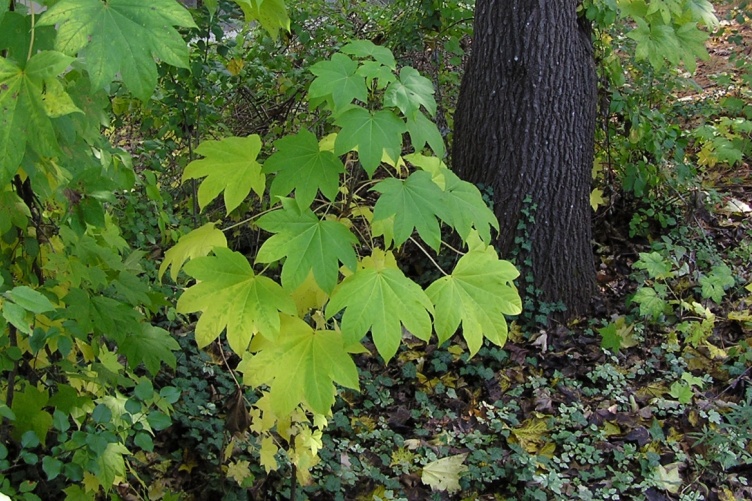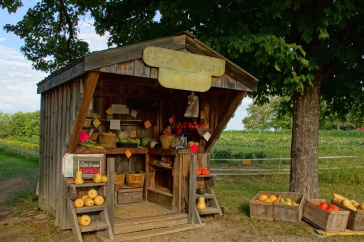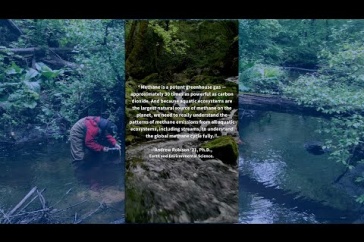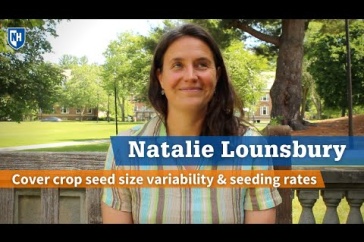
Researchers believe a castor-aralia tree planted on the UNH campus near Spaulding Hall in the early 1970s was the progenitor of both the campus and Thompson Farm populations.
For the first time, University of New Hampshire scientists have tracked the spread of an exotic tree native to Asia that has invaded Durham-area forests to a single tree planted on campus in the early 1970s. The research funded by the New Hampshire Agricultural Experiment Station is part of a larger effort to detect and respond to exotic plants that can have a potentially negative effect on native plants and forest ecosystems.
UNH researchers analyzed the 25-year spread of the castor-aralia (Kalopanax septemlobus) in the Durham area. They found it is capable of spreading via seed from planted trees to urban and natural forests in southeastern New Hampshire. The large, deciduous tree, which has been planted as an ornamental tree and can grow to be 100 feet tall, is capable of invading forests of eastern white pine and sugar maple-beech-red oak, common types in New England.

According to the National Park Service, Harvard University’s Arnold Arboretum distributed the plant to universities across the country in 1972 to celebrate the arboretum’s centennial. Based on the age of UNH’s tree, researchers said it is likely that the tree was a gift from Harvard.
“Although the impact of castor-aralia on North American communities and ecosystem processes is not yet known, colonization of forest understories and rapid height growth suggest it is capable of competing with economically important native plants. At present, early detection coupled with rapid removal is a sensible strategy,” said Tom Lee, associate professor of forest ecology and lead researcher on the study.
“Because a single castor-aralia individual is capable of a great amount of seed production, even small populations and isolated individuals should be eradicated. The large potential dispersal distance and success of seedlings in human-influenced habitats means that even isolated plants in urban environments, including those at urban arboretums, should be removed,” Lee said. “No data on herbicide effects are available for castor-aralia, but plants can be killed by uprooting. The ability of cut plants to produce root and butt sprouts, however, means that removal of entire plants, including major roots, is essential.”
Researchers investigated the invasion of the tree on two sites: the UNH campus and Thompson Farm, both in Durham. They found more than 3,800 trees on campus, and 270 at Thompson Farm. They found trees as old as 22 years and more than 2,500 feet from the purported parent tree. The tree was found in both open and forested areas.
Researchers believe a castor-aralia tree planted on the UNH campus near Spaulding Hall in the early 1970s was the progenitor of both the campus and Thompson Farm populations. Scientists have not found a local parent tree at Thompson Farm where the oldest trees are only 10 years old. The spread of the tree likely was facilitated by birds. The Spaulding Hall parent tree and most of its progeny have been removed.
Little research has been done on the earliest stages of exotic tree invasions. Most invasions are not detected until they are well developed. Yet according to the researchers, much can be learned from studying the early stages of tree invasions.
“Invasive plants may seem innocuous, but they have potential to compete with and displace economically valuable native species. Castor-aralia’s shade tolerance may allow it to compete with New England’s oaks, hickories, and birches – all economically important. Invasive plants also are known to alter nutrient cycling and the flow of energy up the food chain. Typically we cannot predict the effects of invasive organisms accurately and thus it is best to halt their spread until enough is known to make good management decisions,” Lee said.
The research results are presented in the journal Invasive Plant Science and Management in the article “Incipient Invasion of Urban and Forest Habitats in New Hampshire, USA, by the Nonnative Tree, Kalopanax septemlobus.” In addition to Lee, the following researchers with the UNH Department of Natural Resources and the Environment were involved with the study: research assistants Audrey Perkins, Andrew Campbell, John Passero, Nathan Rowe, and Caleb Shaw, and Russell Congalton, professor of remote sensing and geographic information systems.
This material is based upon work that is supported by the National Institute of Food and Agriculture, U.S. Department of Agriculture, under award number 0225004.
Founded in 1887, the NH Agricultural Experiment Station at theUNH College of Life Sciences and Agriculture is UNH’s original research center and an elemental component of New Hampshire's land-grant university heritage and mission. We steward federal and state funding, including support from the USDA National Institute of Food and Agriculture, to provide unbiased and objective research concerning diverse aspects of sustainable agriculture and foods, aquaculture, forest management, and related wildlife, natural resources and rural community topics. We maintain the Woodman and Kingman agronomy and horticultural farms, the Macfarlane Greenhouses, the Fairchild Dairy Teaching and Research Center, and the Organic Dairy Research Farm. Additional properties also provide forage, forests and woodlands in direct support to research, teaching, and outreach.
-
Written By:
Lori Tyler Gula, PhD | NH Agricultural Experiment Station | lori.gula@unh.edu | 603-862-1452




















































